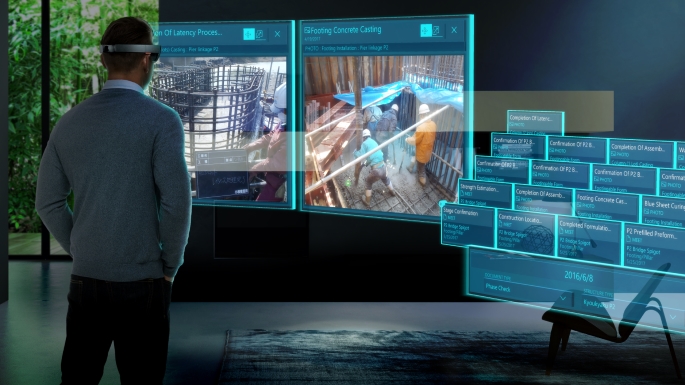As construction projects become more challenging, we are looking at more ingenious ways to engineer and build. We want quicker delivery times and optimal financial expenditure, whilst delivering more complexity. Conventional information management hasn’t always been effective in assisting with project deliverables. This is why Building Information Modelling (BIM) is now strongly- recommended for projects.
When you consider that in 2016, BIM was mandated by the UK Government for public construction projects in the UK, it is clear that understanding the importance, and crucially, the adoption of technologies is vital for future business success and contract wins.
The BIM Journey
Building information model (BIM) appeared in a paper by G.A.van Nedervee in 1992
Building Information Modelling was mandated for central government for public construction projects in the UK in 2016.
Smart highways, smart buildings, smart engineering, smart cars, smart phones, virtual reality. Some are smart; some are still ideas in development – 2017
Construction – Then and Now
The three bridges over the River Forth are considered by many, as the pinnacle of engineering which has spanned three centuries.
Each bridge is a reflection of the progression of the cutting-edge technology that has been utilised for each. With all three standing side by side, it makes for an interesting comparison.
So what is in the future?
BIM is moving fast with new approaches and applications emerging constantly. We have looked at what is going on across the world to give you a snapshot of what we have to look forward to:

Building Information Modelling – a look into the future
Microsoft Hololens
Microsoft Hololens is now being utilised to enable developments to progress through holographic projection and virtual interaction. VR headsets allow designers and engineers to understand how an engineered virtual reality can benefit the construction phase.
It is a lot easier to walk around, expand, go into and walk through a virtual model than it is to rotate a 3d model on screen, or indeed review a simplistic physical model.
We are now aware of this technology in use on live projects in the United Kingdom, United States, New Zealand and Australia.
Intelligent Machines
When looking at physical development, we need to consider data from intelligent machines. Increased sensor speeds give better machine reaction speed, so therefore increase outputs, and decrease the time to deliver. The use of more efficient engines can save on project downtime, and integrated scan and survey systems like Trimbles SX10, which can offer enhanced usability, can reduce processes by up to 50% by bringing multiple hardware into one system. Remote-controlled excavators are a great resource in challenging locations.
Advancements in BIM technology will help us in overcoming some of the challenges that we face including questions such as: How do you control the plant? How can you view what the machine is doing? And, can we automate the process?
We are now in a situation where technology is developing at such a rate that training in the use of BIM technologies is even more fundamental to getting a true cost-benefit.
Flexible data storage
In general terms, construction data storage requirements have at least quadrupled in a year. The use of drones, scanners, higher resolution photography, more phone photos, increased usefulness of videos and simpler data collection methods results in more data output.
We are seeing more data output than ever before on the projects that we are involved in, and it is important to find ways in which manage it effectively.
The use of cloud-based storage systems provide easier and quicker access for project information. The cloud allows you to see all of the data, but only access what you need making it efficient and easy to use.
Dropbox and Google, Microsoft and 12dSynergy provide platforms where multiple users can access information from various locations at the same time. These platforms facilitate easier access to project data, which enhances collaboration capabilities, and it has certainly improved our ability to collaborate and share with both our clients and our team here at GDL.
Data is the currency of the future
Data is growing exponentially, and how we manage data and use it effectively within our industry has become a control entity in itself.
There are important questions that we need to ask ourselves to achieve effective data management: How quickly can we share data with stakeholders? When will we share the data? Have we checked the data? Is the quality of the information as good as the computer says it is, and in what format can we share that data to ease utilisation?
This is where we become more involved in the processes that BIM was established for. BIM needs information to be successful. Standardisation obviously simplifies the process, but true collaboration still entails sitting down with as much information as is relevant to the works in discussion and resolving those processes through human communication.
This is still the driving force behind project success. The designer, the contractor, the client.
< BackThank you for joining our mailing list. We include an unsubscribe link in every message we send so you can leave our list at any time.